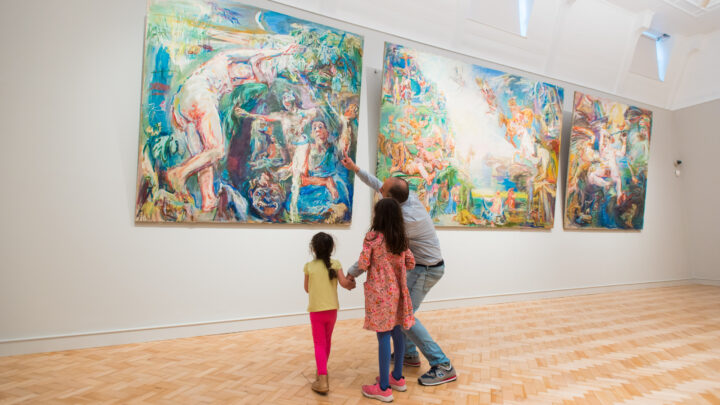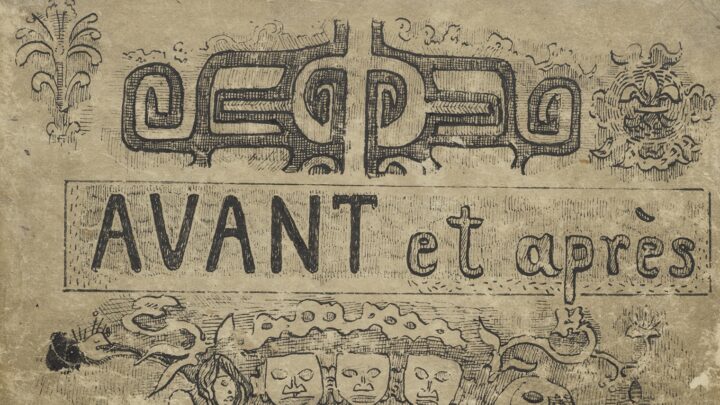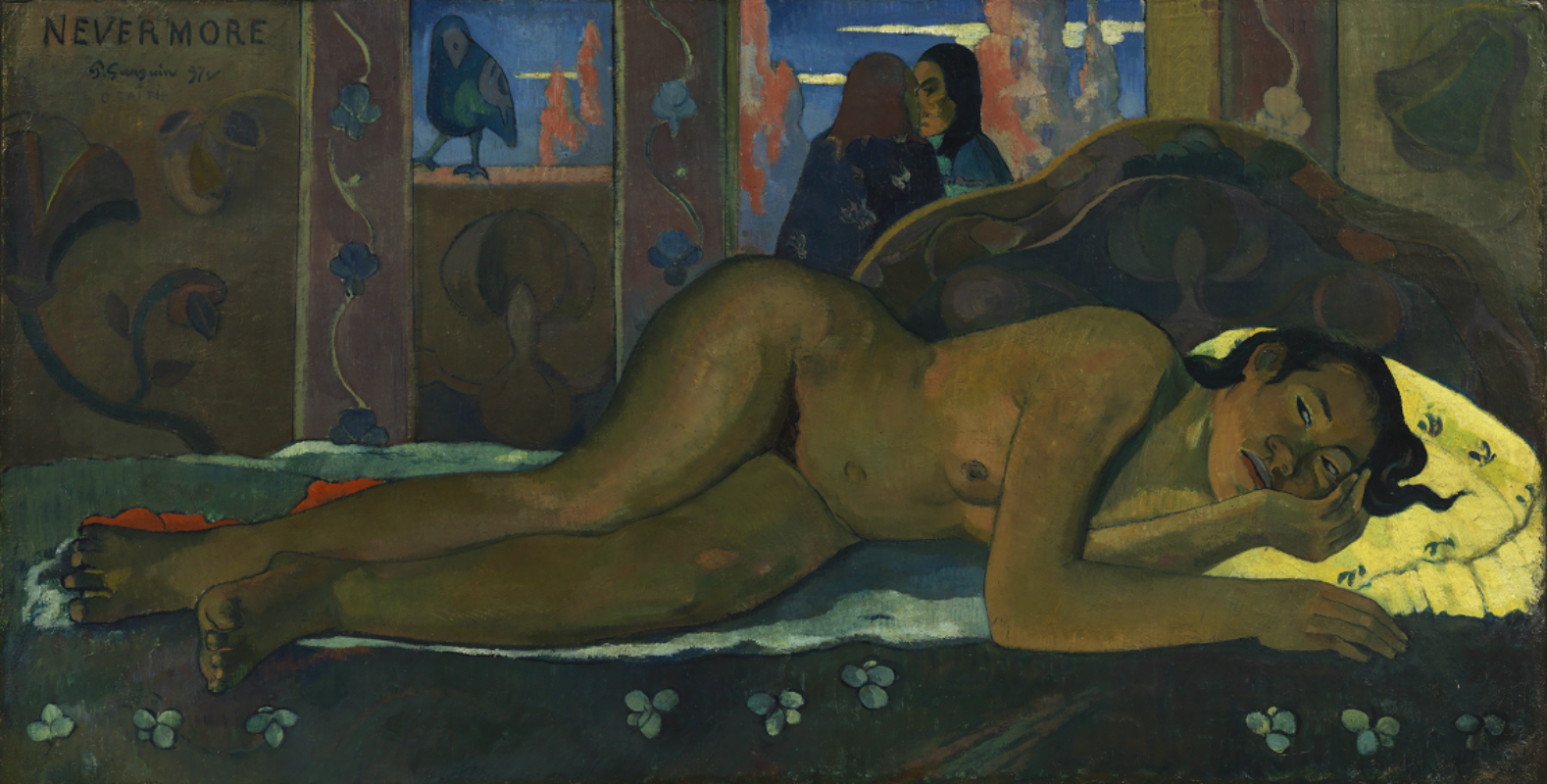
Nevermore
Paul Gauguin
Paul Gauguin painted Nevermore in February 1897, during his second and final stay in Tahiti, an island in the southern Pacific colonised by France. Intended for a white European male audience, the sensual reclining nude belongs to a long artistic tradition. To this familiar theme however, Gauguin added a sense of exoticism, writing to a friend that his nude is meant to suggest “a certain barbarian long-lost luxury”.
This disconcerting painting combines beauty and eroticism with a strong feeling of unease. The young woman is not at rest but anxiously aware of the bird and the strange beings behind her, who may be evil spirits. For modern viewers, the youth of the nude figure, sometimes identified as Paul Gauguin’s 15-year-old partner Pahura, is its most unsettling aspect.
The painting’s title associates the bird on the ledge with Edgar Allan Poe’s poem The Raven (first published in 1845, translated into French in 1875). In it, a poet, driven mad by the death of his lover, hears a raven endlessly repeating ‘nevermore’. This sense of loss has sometimes been seen as alluding to Gauguin’s disillusionment at the destruction of Tahitian culture by the French authorities. Instead of the unspoilt paradise he had imagined, he found a society corrupted by decades of colonialism. This did not prevent him from taking advantage of his position as a European coloniser. Pahura was one of several teenagers that he took on as ‘wives’. The widespread racist fantasy of Tahitian girls as sexually precocious led to their unabashed exploitation.
Watch Open Courtauld Hour
Explore this painting in our virtual tour
This painting is on display in the LVMH Great Room, Level 3 of The Courtauld Gallery. You can view this room from the comforts of your home through our virtual tour.
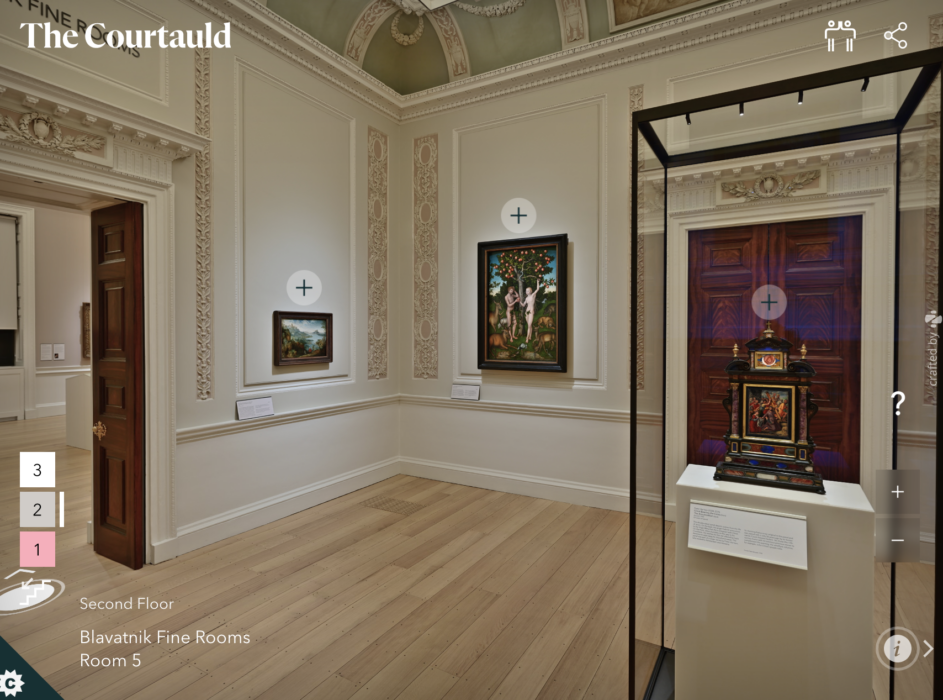
Create your own gallery
Bring home your favourite pieces from The Courtauld’s collection with our exclusive custom prints to suit your space. Choose from art paper or canvas, in a range of sizes and frames, and we will make your print and deliver it directly to your door.
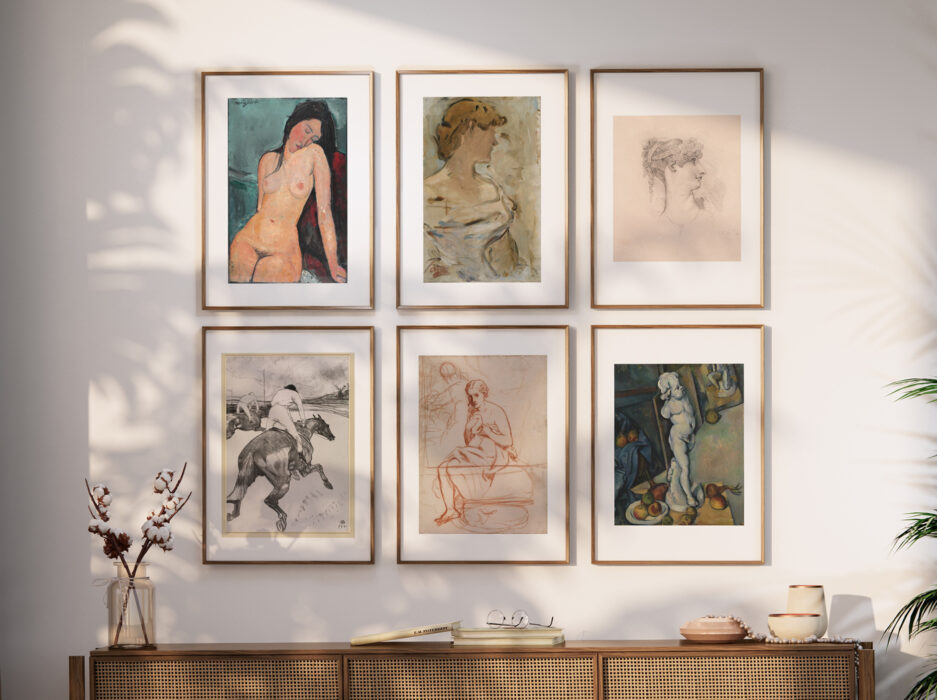
See more collection highlights
Explore The Courtauld’s remarkable collection of paintings, prints and drawings, sculpture and decorative arts.







